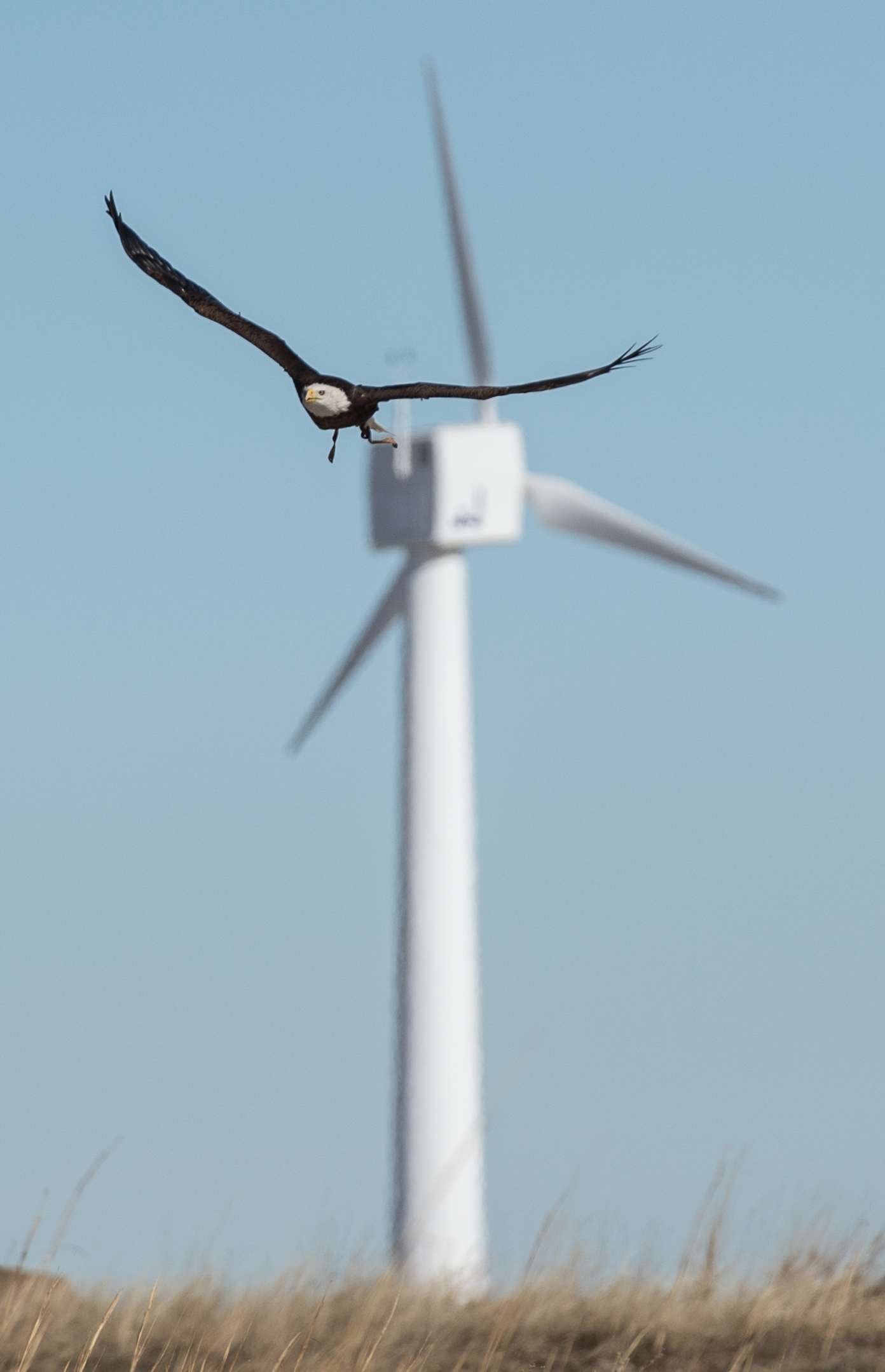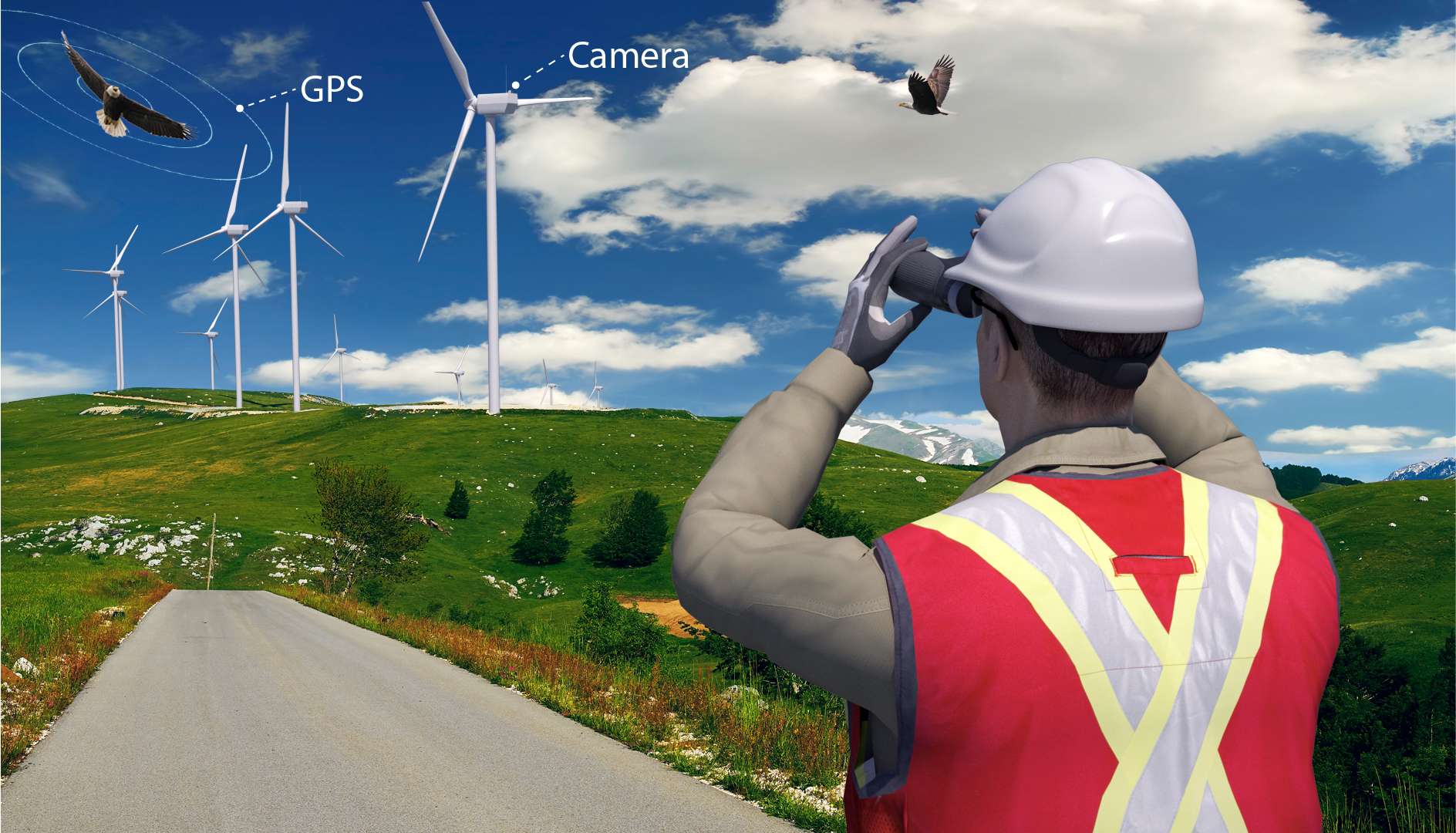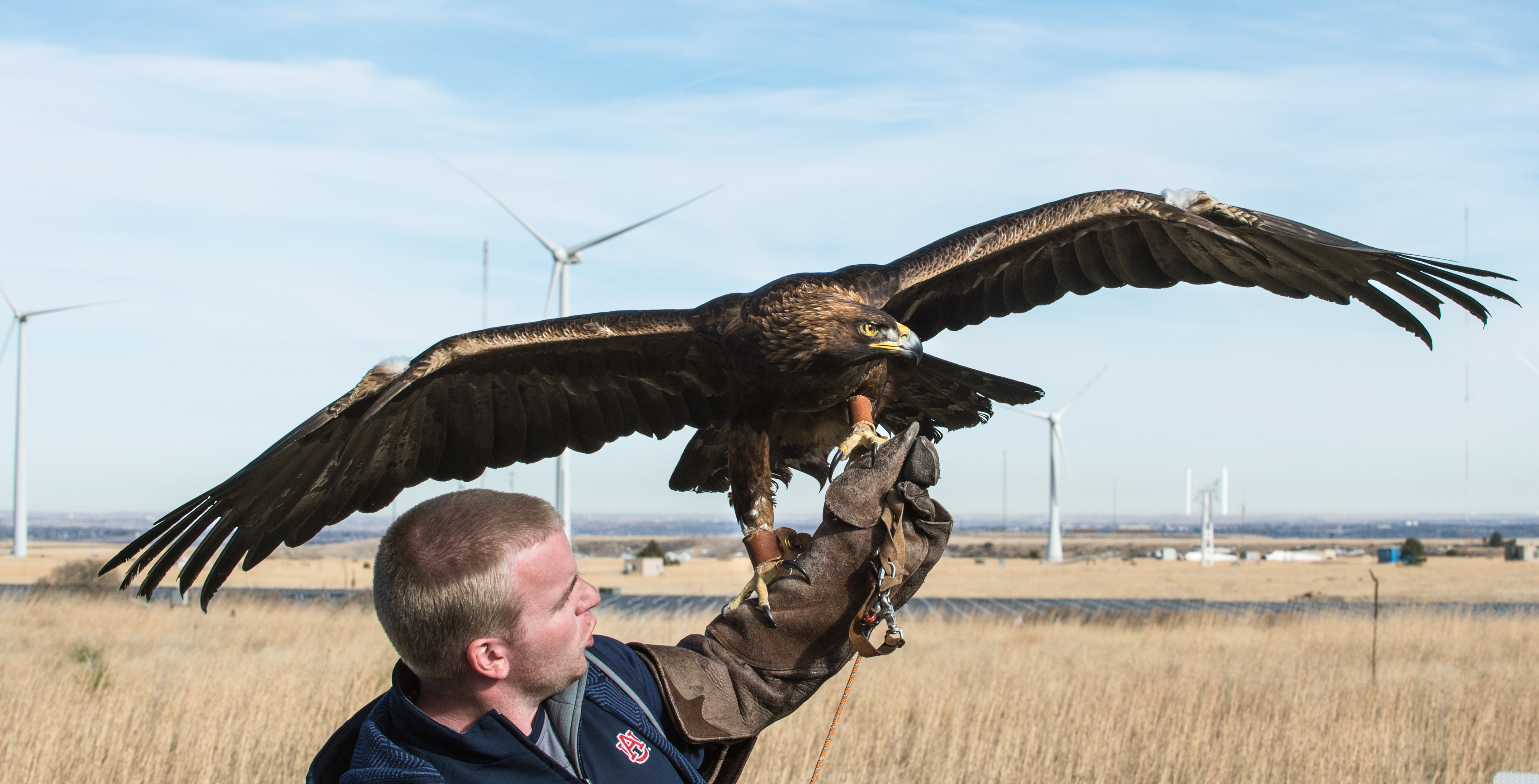Wind Turbines and Birds
Although wind energy benefits the environment, wind turbines and related infrastructure and operations can affect wildlife, including bats, marine mammals, and birds. The U.S. Department of Energy Wind Energy Technologies Office researches ways to improve coexistence of wind energy with wildlife.

Spirit, a 20-year-old Bald Eagle, flies from a lift to his trainer at the National Renewable Energy Laboratory’s Flatirons Campus during research on coexistence of eagles with wind turbines. Photo from Dennis Schroeder, National Renewable Energy Laboratory
Are Wind Turbines Dangerous to Birds?
Over the past two decades, improvements in wind turbine design and wind energy project siting have greatly reduced the impact of wind energy development on birds. Today’s land-based wind turbines are larger and spaced farther apart than those in previous years, which means we need fewer of them to produce the same amount of power. Offshore turbines are even bigger. In addition, they are built to prevent birds from perching on them. Thanks to these changes, today’s wind turbines pose little hazard to most birds.
However, as with all man-made structures, wind turbines can have adverse wildlife and environmental impacts. Birds sometimes collide with wind turbine blades, and wind farms have the potential to disrupt bird habitats. However, other man-made infrastructure and forms of human interaction (including house cats) are far more harmful.
To help understand wind energy’s impact on birds, researchers conduct monitoring studies at proposed and operating wind energy facilities. These studies can help inform decisions about a plant’s location, size, and layout to reduce risk to wildlife.
This can include:
- Conducting site surveys to identify the location of raptor nests.
- Conducting visual surveys to document the presence and activity patterns of birds throughout the year.
- Using field monitoring to quantify the timing and magnitude of collisions.
The data gained from these studies can help wind farm developers and operators implement strategies that will help protect birds from wind turbines.
How Can We Protect Birds From Wind Turbines?
The easiest way to keep birds safe from wind turbines is to avoid building turbines in areas where birds like to fly, roost, feed, mate, and raise their families. Researchers often conduct field surveys to monitor bird activity and locate nest sites to determine potential risk.
Monitoring Tools
Wind energy site developers can use several tools to monitor and predict bird activity. For example:
- The Pacific Northwest National Laboratory’s ThermalTracker 3D system uses thermal cameras to monitor the flight activity of birds and bats at land-based and offshore wind farm sites.
- Radio-frequency tags and transmitters can help researchers learn more about bird behavior, flight patterns, and favored areas or habitats, which can help guide wind energy developers toward sites with less activity and simplify environmental permitting processes.
- Computer models that use the tracking information, like the National Renewable Energy Laboratory’s Stochastic Soaring Raptor Simulator, to predict the most likely long-distance flight paths of golden eagles, can also be used to predict bird activity and habitat conditions in specific locations.
- Offshore buoys equipped with Pacific Northwest National Laboratory radar systems to monitor behavior and abundance of birds at potential offshore wind energy sites.
These and other tools can help developers site turbines in lower-risk locations and help operators implement smart or manual curtailment measures to avoid collisions. For example, during annual bird migration periods, land-based or offshore wind power plants can temporarily shut down operations, stopping rotors from spinning.

Researchers and members of the wind energy industry help to mitigate the impacts of wind energy projects on birds using a variety of tools, such as global positioning devices (GPS) or observational records from cameras or ground-based surveys, to track and model bird flight habits. Graphic from Josh Bauer, National Renewable Energy Laboratory
Location Avoidance
In addition to monitoring flight paths of birds, wind energy project developers identify and avoid locations with favorable habitat characteristics. These characteristics include:
- High populations of prey animals
- Areas for nesting sites
- Migration paths and stopover sites
- Winter ranges
- Wetlands and mountains.
Through the Enabling Coexistence Options for Wind Energy and Wildlife program, researchers at the National Renewable Energy Laboratory collaborate with technology providers to support the development and validation of emerging technologies related to bird and other wildlife interactions at land-based wind farms.
In addition, the National Renewable Energy Laboratory and Pacific Northwest National Laboratory are collaborating on the U.S. Offshore Wind Synthesis of Environmental Effects Research project to assess interactions between offshore wind energy and wildlife, including birds. (Watch a webinar on potential risks to birds from offshore wind energy, behavioral responses like avoidance, and monitoring and minimization technologies.)

In 2016, golden eagles, trainers, and a veterinarian from Auburn University participated in research to help the U.S. Department of Energy's National Renewable Energy Laboratory develop a radar and visual systems that prevent bird strikes with wind turbines. Photo from Dennis Schroeder, National Renewable Energy Laboratory
Are There Guidelines for Helping Birds and Wind Energy Coexist?
When it comes to researching wind energy’s coexistence with birds, endangered and migrating birds are a particular area of concern. The Endangered Species Act protects threatened or endangered wildlife and plants. The Migratory Bird Treaty Act protects migratory birds, making it illegal to, for example, take, sell, or purchase such birds (unless a person has a valid permit).
Wind energy project developers can use Land-Based Wind Energy Guidelines from the U.S. Fish and Wildlife Service’s Wind Turbine Guidelines Advisory Committee to advance wind energy projects while complying with these acts. The guidelines use a “tiered approach” to assess potential impacts to wildlife and their habitats:
- Tier 1: Preliminary evaluation or screening of sites (landscape-level screening of possible project sites).
- Tier 2: Site characterization (broad characterization of one or more potential project sites).
- Tier 3: Field studies to document site wildlife conditions and habitat, and predict project impacts (site-specific assessments at the proposed project site).
- Tier 4: Post-construction studies (to estimate impacts).
- Tier 5: Other post-construction studies (to evaluate direct and indirect effects of adverse habitat impacts and assess how they may be addressed).
This tiered strategy allows wind energy developers to assess the information they have—and determine what information they need—to make bird-smart decisions about wind energy development projects.